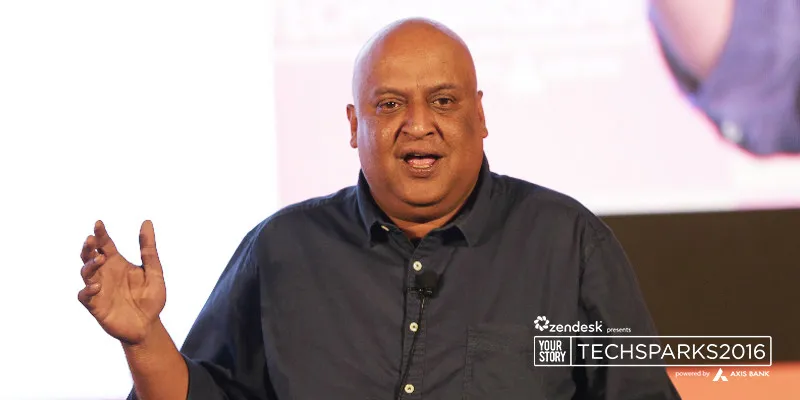Social media is like a real-life Newshour debate, says Ramesh Srivats at TechSparks
“Social media used to be all about stalking irrelevant details of the lives of irrelevant people,” says Ramesh Srivats, the man that has TechSparks and Twitter alike in splits with his successful hits and abominable misses with entrepreneurship. But this cannot be said of social media anymore. “Today, social media is people, and people are the new marketing, not your branding, advertising or product itself,” he says. How then, can this newest form of the new media be leveraged? For all the marketers struggling with leveraging social media and approaching it all wrong, Ramesh, in his usual, flamboyant manner, explains the newly discovered and rather commonly found species that is the “connected human being.”

The real-life Newshour debate
Social media, says Ramesh, is full of bizarre communities of people who have the weirdest things in common. Case in point, the 'Ramesh Srivats for PM' page on Facebook, that had a staggering 1,000 people signed up. These communities are constantly expressing. “Facebookers, always happy. Tweeple, always angry. LinkedIn users, always successful,” he muses. And this massive community of connected users together turn social media into a real-life Newshour debate. Brands, instead of butting into conversations with ads and posts that read like, "Sorry to interrupt, but may I sell you some socks while you talk about your last breakup?” must understand that their brand image and popularity has little or nothing to do with what they tell their viewers, and is now, completely dependent on what the viewers tell – or evangelise- to each other. In a situation like this, a brand must be smart enough to create content that is “sexy” enough to find its own way into conversations, rather than them invading the conversations directly.
People and their conversations can’t be bought, unfortunately...
Creating “viral” content is an illogical brief. So many advertisers run pillar to post calling advertisers, marketers, consultants, and writers, asking them to concoct “viral” content, or that “one slogan” that will become a catchphrase. “That’s like Beethoven waking up one day and stating, ‘Today, I will compose a classic.’ He just does what he does, and hopes it’s a good melody, isn’t it?”
Brands should do everything from awe-inspiring to ridiculous to outrageous, online as well as offline, to have it find a spot on online virality. “It’s not what you say, but what you do, that defines you,” says Ramesh. Be cool. In what you say, in what you do, in what you promote – don’t chase the holy grail and try to fabricate that explosive viral video – focus on staying cool and relevant, and buzz will follow.”
In short, be like Subramanian T.R. Sharma
The superhero name of Ramesh’s ideal social media sensation, is “Subramanian T.R. Sharma.”
Be controversial, buzzworthy, and talkworthy like Subramanian Swamy. No matter what gyaan he gives, he gets people talking.
And then, don’t do just one thing; do a hundred – like southern sensation T.R. Rajan – who writes, scripts, directs, produces, sings and acts in all his films himself.
And lastly – don’t be perturbed by flops, like Rohit Sharma.
A big shoutout to all our sponsors - Zendesk, Axis Bank, Sequoia Capital India Advisors , Digital Ocean, Microsoft, AWS, Akamai, Target, Verisign, Kerala Startup Mission, Brand Launch Centre, Tork and Blink.







